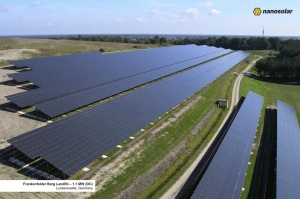Study: Solar industry using best practices for safety, environment
 A report released this week on the best practices for solar panel manufacturers in regards to employee safety and environmental concerns found that solar photovoltaic companies are ahead of the curve.
A report released this week on the best practices for solar panel manufacturers in regards to employee safety and environmental concerns found that solar photovoltaic companies are ahead of the curve.
As You Sow works in corporate responsibility, researches company practices and shares findings with shareholders.
“We have done a lot of work with the electric utilities,” said Amy Galland, author of the Clean & Green Best Practices in Photovoltaics report. “There really is a lot of confusion and a lot being said about the manufacturing of solar.”
Solar-nay-sayers have been known to argue that solar panels take more energy to manufacture than they produce, for example.
“That’s just not true,” Galland said. “The energy pay-back time for solar is 1. low and 2. shrinking.”
It takes about a year for a solar crystalline panel to produce as much power as it took to make it. That’s just six to eight months for thin-film, Galland said.
“The pay back is very short,” she said. “And after that first year it then creates electricity for another 30 years with no emissions.”
Beyond a short energy payback period, solar companies seem to be acting socially and environmentally responsible, according to the report—though there is always room for improvement.
“What stood out to me is just how much the solar industry is already doing,” Galland said. “The industry is aware of issues and is investing in solutions. That would be different from the utilities who are aware of issues and are investing in lobbyists.”
Solar panel producers are building plants in places where they can access reliable, clean power. And if they have to set up in a coal-fired state, they tend to clad their buildings in their product so they can produce their own clean power.
Companies like SunPower tie executive compensation to environmental performance factors, Galland said. That’s a move that’s ahead of its time.
Companies are even working with their silicon suppliers to reduce waste, she said.
“The industry seems to have learned from its predecessors,” she said.



